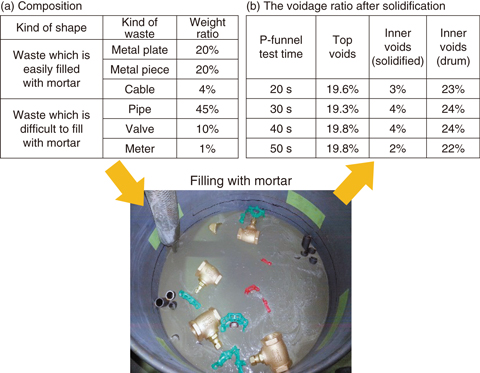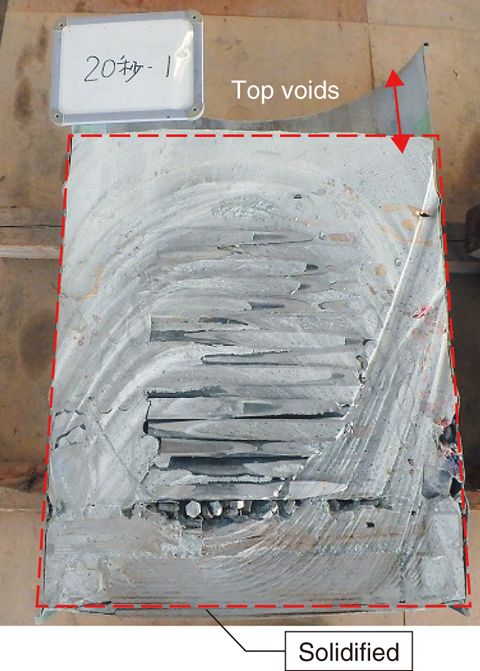
Fig.8-8 Composition of Simulated waste, (a) as filled with mortar and the voidage ratio after solidification (b)

Fig.8-9 A vertical cross-sectional view of the simulated waste
We are planning for the disposal of radioactive wastes generated from research, industrial, and medical facilities. Before the radioactive waste is disposed of, it should be conditioned so as to meet technical standards. One technical standard is that radioactive waste should be solidified and stored in a container in which no harmful voids remain after filling. This is intended to prevent scattering of radioactive waste and the collapse of disposal facilities after backfilling with soil.
Solidification methods that ensure that wastes are immobilized in 200-ℓ drums within cementitious matrices and no harmful voids after filling are studied. Our aim is to confirm the adequacy of our solidification methods for conservative “simulated wastes” containing more valves and pipes (which are difficult to fill and likely to be left with voids) than actual waste.
The fluidity of mortar is important. Mortar’s viscosity decreases significantly in proportion to its water content, increasing the likelihood that the voids between wastes in the 200-ℓ drum will be filled. However, the effect of such inviscid mortar may cause faults after curing. In contrast, a strength gain readily occurs when the amount of water contained is small but the voids between wastes become difficult to fill with mortar.
The indicator of the fluidity is the test result of the P-type funnel method, expressed as the time at which a given mixture flows down under the funnel. Four types of fluid cement-water mixtures with fluidities of 20, 30, 40, and 50 s are prepared. The mix loses fluidity with increasing time.
Simulated waste packages were produced by placing the waste materials in 200-ℓ drums, which were then filled with mortar of the mix proportions at a general injection speed of 30 ℓ/min, followed by curing. The void ratios within these waste packages were less than the limit of 30vol% (Fig.8-8), equivalent to the assumed average void ratios in the installation ground of our disposal facilities. For this reason, it is considered not to be harmful.
The vertical cross-sectional view of the waste packages demonstrated that the wastes and mortar were in close contact with the inner walls of the 200-ℓ drums, as shown in Fig.8-9. For this reason, wastes are considered to be immobilized within a cementitious matrix and to exist in an un-scattered state.
From these results, an appropriate solidification method corresponding to the technical standards of waste-disposal confirmation were demonstrated under the condition that waste materials were placed in a 200-ℓ drum and filled with mortar in a controlled manner regarding the injection speed and fluidity described above.
On the basis of this result, this solidification method serves as a reference when manufacturing waste packages from research, industrial, and medical facilities.